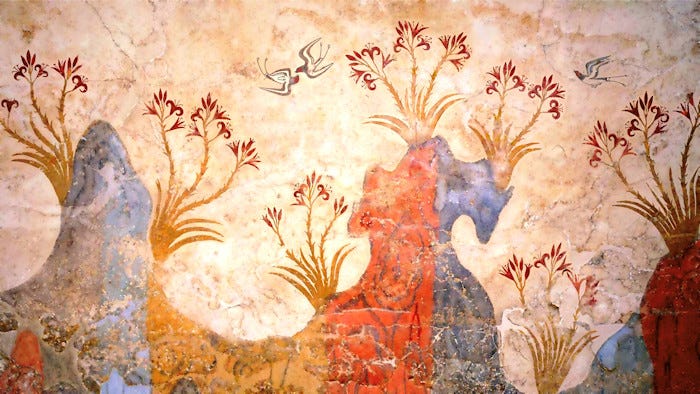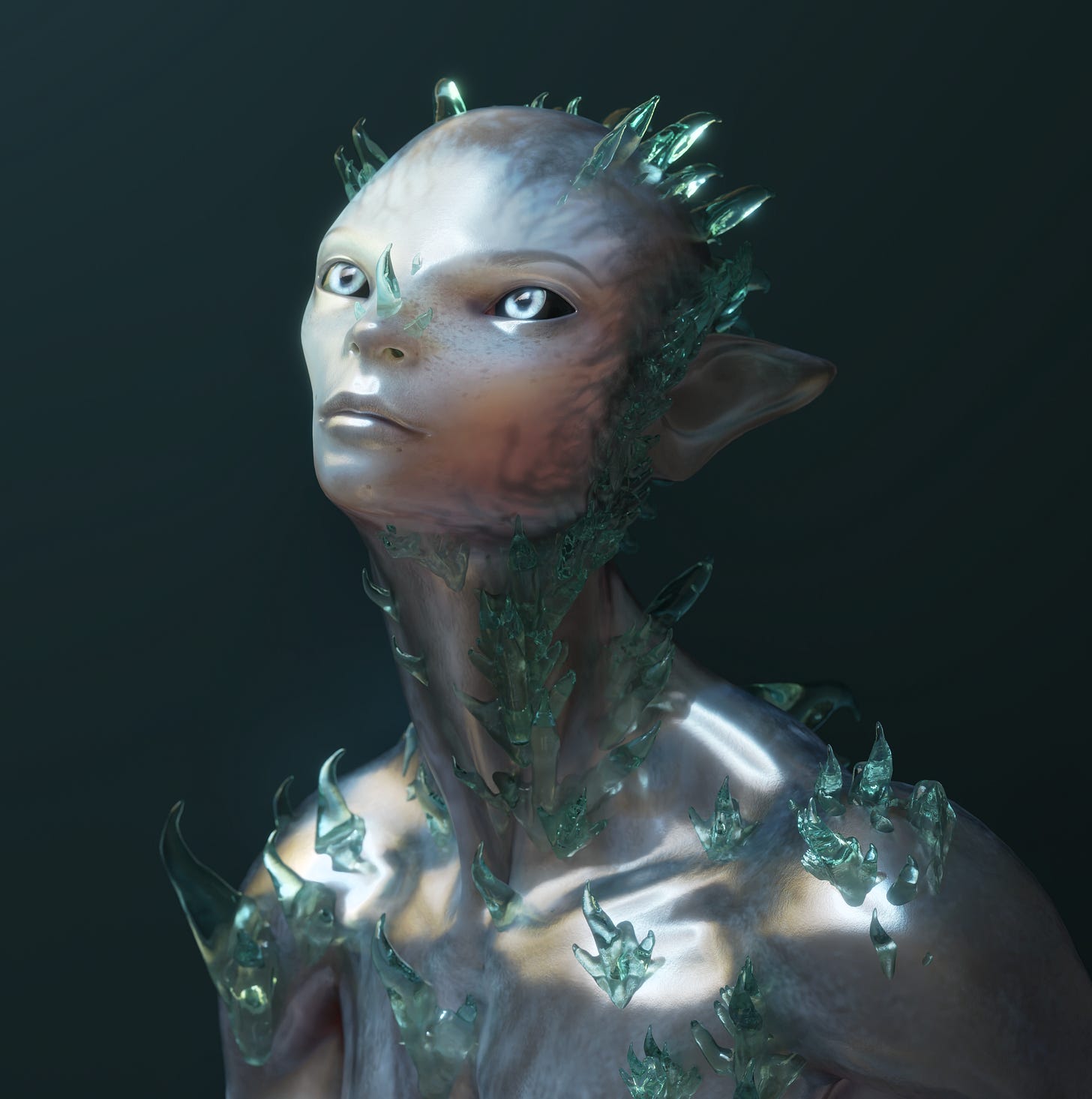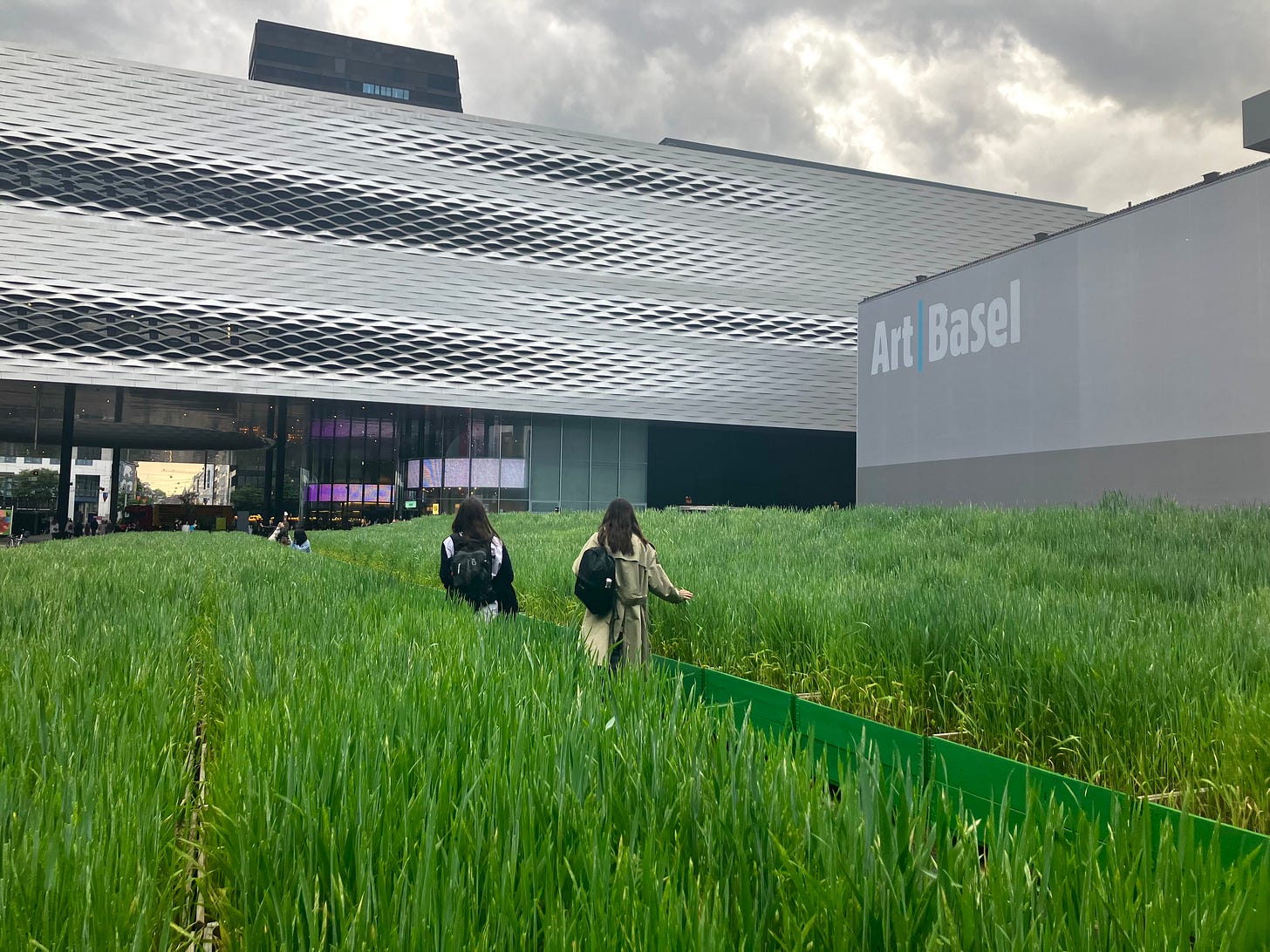SHIFTED #6: On Eco-Logic, Action-Driven Art, and the Quest for a New Nomenclature
Having just enjoyed two fabulous weeks dedicated to contemporary and digital art in Paris with ArtBasel and Paris Photo, I realised that one question was recurring throughout my various discussions. How can we talk about art that deals with environmental issues, ecology, biodiversity, the Anthropocene, today?
Is it ecological art or eco-art? Environmental art? Art for the planet? Art for better futures? Anthropocene art? Restorative art? Artivism? Is it about nature or is it nature? Can we even use the word nature today?
Each terminology suggests a distinct orientation and intention, though.
This search for the ‘right’ word, for the right fit with a movement, can seem endless. It's as if we were looking for a container, the right size and shape, to hold something as vast as all the ecosystems on our planet, our modern anxieties and our deepest hopes for the future. What do we call this art of consciousness? Art for the planet, for the climate, for all living and nonliving beings, or even for the soil around us?
Environmental Art vs. Eco-Art: Naming the Unspeakable Crisis
When I was working on elaborating Blueshift Gallery’s website, I have done researches of these terminologies to make sure I’ll be using the right words. The common definition of ‘environmental art’ includes the work of artists who are “addresses social and political issues relating to the natural and urban environment” (source: Tate).
While ‘eco-art’ or ‘ecological art’ involves something slightly more activist, perhaps more interventionist in the way the artist practices its art. In ecological art, there is a sense of being part of a living system, of ‘working with’ rather than ‘working on’. Ecological art tends to propose new practices that are more conscious of their impact on the environment, a more sustainable artistic practice.
However, everything was shattered last week when I attended an online course presented by Gabriel Alonso part of the Institute for Postnatural Studies. There, I realised how much we were using the word ‘ecology’ without really understanding what it meant. The word ‘ecology’ is a term whose Greek roots, oikos (meaning ‘house’ or ‘habitat’) and logia (meaning ‘study’), intrinsically present nature as a system to be managed or observed. Ecology, in its scientific sense, focuses on nature's ‘home’ and its interactions, often as an object of study, not as an entity endowed with power. The term implies observation, administration and management - qualities that make man an external supervisor of natural processes. We are therefore faced with an extremely anthropocentric terminology, which gives no agency to what is not human.
The word ‘environment’ derives from the Old French environner and is made up of three parts: the prefix en- (‘in’ or ‘inside’), the nucleus viron (from Old French, meaning ‘circle’ or ‘perimeter’) and the suffix -ment. Together, they describe ‘the state of being surrounded’ or ‘that which surrounds’. This etymology reflects an anthropocentric vision, positioning nature and non-human life as a backdrop encircling human existence, reinforcing a separation between humans and the world around them.

Terms such as ‘ ecological art “ or ” environmental art’ suggest something outside of ourselves, confirming a human/nature dichotomy that this emerging art movement seeks to dissolve. Indeed, today, artists are seeking to break down this difference, to make our way of looking at non-humans, living and non-living species more fluid, and even to create mutations between different species, so that the world is in constant transformation.
This desire to break down differences and walls is also well represented in the decolonialist, queer and feminist art movements, where changing words is above all about giving a new voice, a new consideration, rewriting history and the future. So how can we talk about an art movement that seeks by its very nature to deconstruct? to transform? to fluidify?

Eco-Logic: Agnes Denes and the Purpose Shift of Environmental Art
Agnes Denes is an eco-artist who has been active since the 60s and mostly known for her ecological art projects like the giant wheatfields placed in urban environment (last seen in ArtBasel in Basel 2024). She also has been highlighting the limitations of existing terms and the need for a language when talking about contemporary environmental art.
She suggested a fascinating approach to understanding the purpose and power of ecological art today through her concept of ‘eco-logic’. She talked about an approach that goes beyond aesthetics or passive observation, calling instead for art that proactively responds to environmental and philosophical challenges. Eco-logic suggests an artistic practice that combines scientific and philosophical principles with ecological awareness, proposing that art not only represents nature, but directly engages with its processes, complexities and crises.
Whether it is through her Wheatfield-A Confrontation (1982) where she planted a wheat field in Manhattan, or Tree Mountain-A Living Time Capsule (1996), a reforestation initiative in Finland, the practice of Agnes Denes shows her commitment to achievable change and ecological restoration, embodying both a strong philosophical standpoint and a real-life impact.
This leads me to a concept I mentioned in one of my previous article: what if we are facing a shift in art where it is becoming a tool for real-life impact.
In his article “Eco Exhibitions Won't Save Us”, published on ArtReviews, Marv Recinto criticizes the proliferation of art exhibitions dealing with ecological themes, arguing that while they raise awareness, they often have no tangible impact on environmental crises. She explains that many institutions and artists are content to “address”, “engage” or “respond” to the climate crisis without promoting concrete change. She calls for a paradigm shift where art goes beyond aesthetic contemplation and changing narratives, and becomes a catalyst for ecological action in the real world, underlining the need for art to go beyond representation and actively contribute to environmental solutions.
It seems we have a pattern here. From the concerns of Agnès Denes in 1971 to those of Marv Recinto in 2023, the need to find the right nomenclature for today's urgently needed art is immediate.

Imagining New Terminology
If the terms “ecology” and “environment” no longer reflect the intentions of this movement, what might? Here are some proposals that might better communicate the intentions, direction and scope of this evolving art movement:
Symbiotic Art: art that cultivates mutual and collaborative relationships between humans, nature and ecosystems, positioning nature as a co-creator and not as a subject.
Planetary Art: art movement that addresses the interconnectedness of all planetary systems, encouraging responsibility towards and integration within the Earth's diverse ecosystems.
Regenerative Art: art that restores and recreates environmental resources, with an overall focus on ecological recovery and sustainability, both in concept and in the use of materials.
Ecospheric Art: art that embodies and interacts with the entire ecosphere, including atmosphere, hydrosphere, biosphere and lithosphere, for a holistic ecological approach.
Terra Praxis: an Earth-centered art practice rooted in ecological restoration and sustainability, embodying a practical commitment to the health and resilience of the planet.

While finding the right word is still an open question, what is clear is that we must not underestimate the impact that action-oriented art can have on our future. Obviously, finding the right word would make it easier for everyone to talk about it, but in the meantime, let's support the artists who make up this movement.
Upcoming news by Blueshift Gallery:
“Echoes of Life - Memories of Fragile Ecosystems” exhibition opens at the Institute of Fine Arts in Cali, Colombia from 16 to 23 November. Curated by Ana Aguirre and Diane Drubay, this ow-tech and locally sourced environmental digital art exhibition is conceived as a trans-continental dialogue between stories of extractivism and deep connection with nature. Artists featured: Alexandra Crouwers, Ana Aguirre, BE A STEREOTYPE, Devan Harlan, Heliodoro Santos, Juan Ramirez, Kelly Richardson, Rodell Warner, Violet Bond. Press release here.
Blueshift Gallery will open a virtual gallery on the martketplace OBJKT.com. Read more.
Blueshift Gallery contributes to the group show “REIMAGINE TOMORROW, 1954–2024. AI IN CONTEXT #2” presented by EXPANDED.ART and curated by Anika Meier at Heilig Geist, as part of the AI Biennale in Essen, from 17 to 24 November. Blueshift will present a new artwork by artist Mark Dorf. Read more.
Blueshift Gallery presents the exhibition “Soft Mutations - Alienation as Transformation” at Artverse Galerie in Paris, France, from 18 November to 14 December, in collaboration with OBJKT.one.


